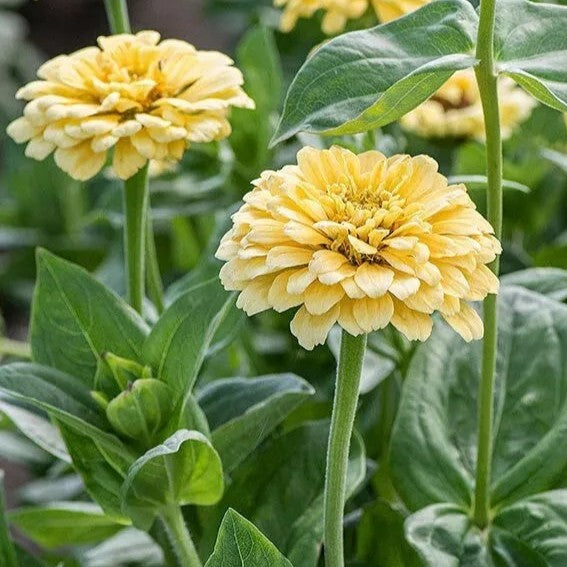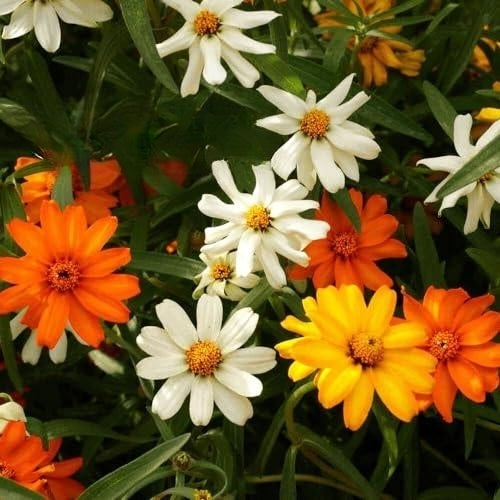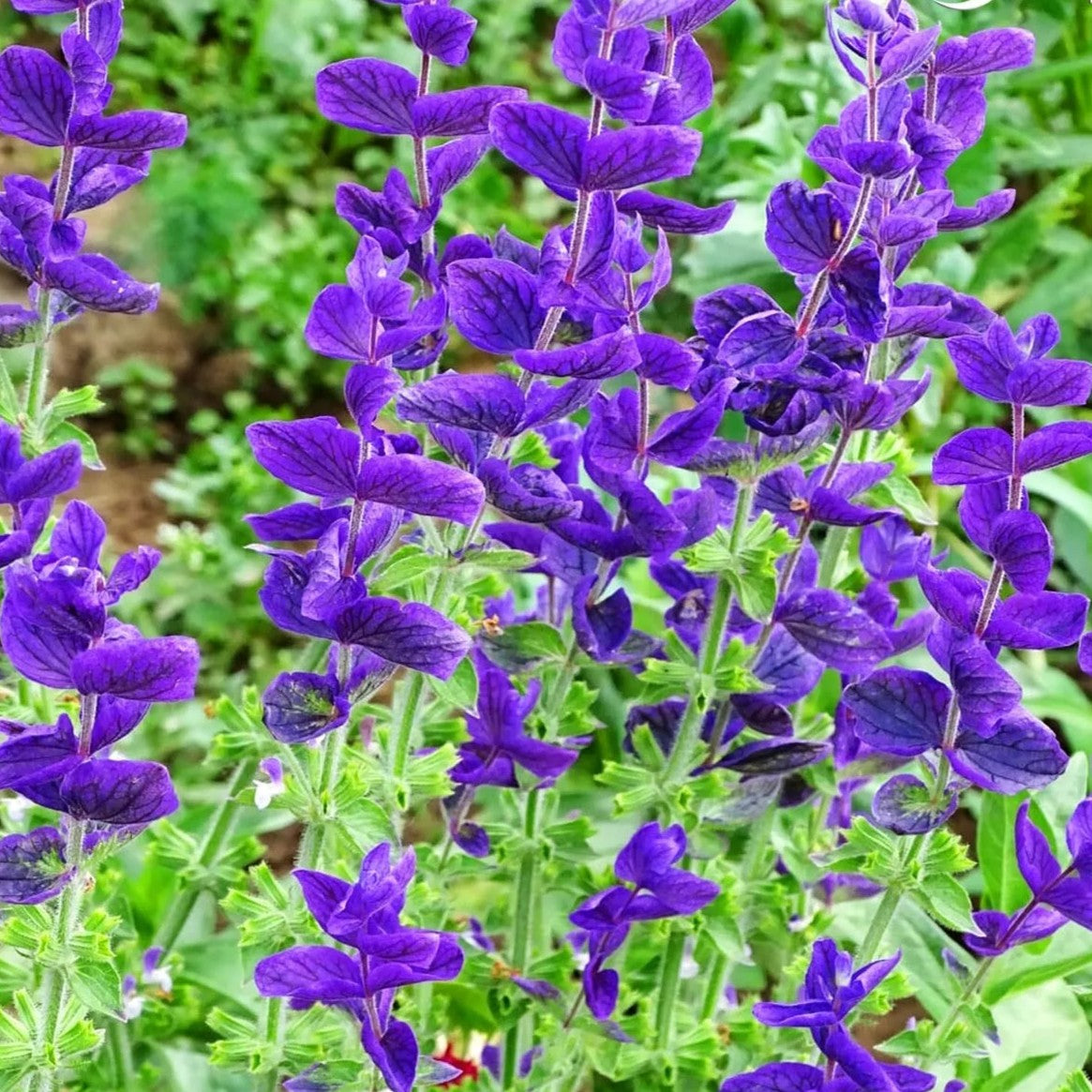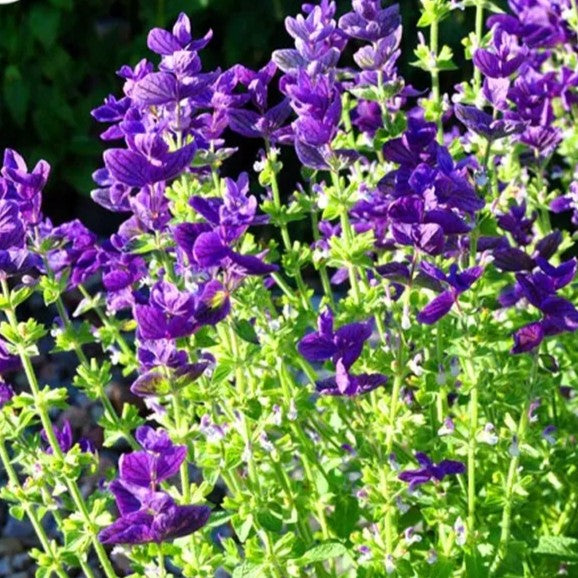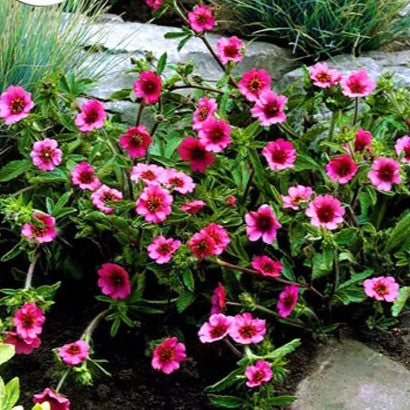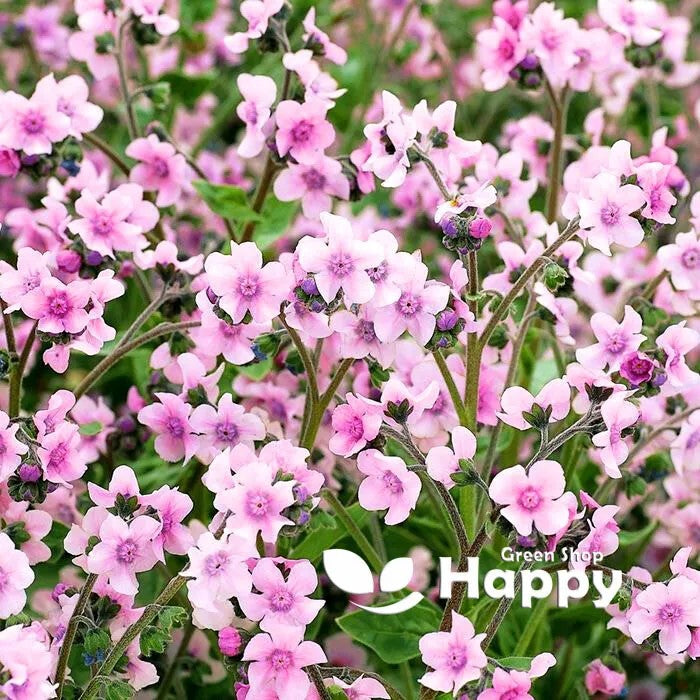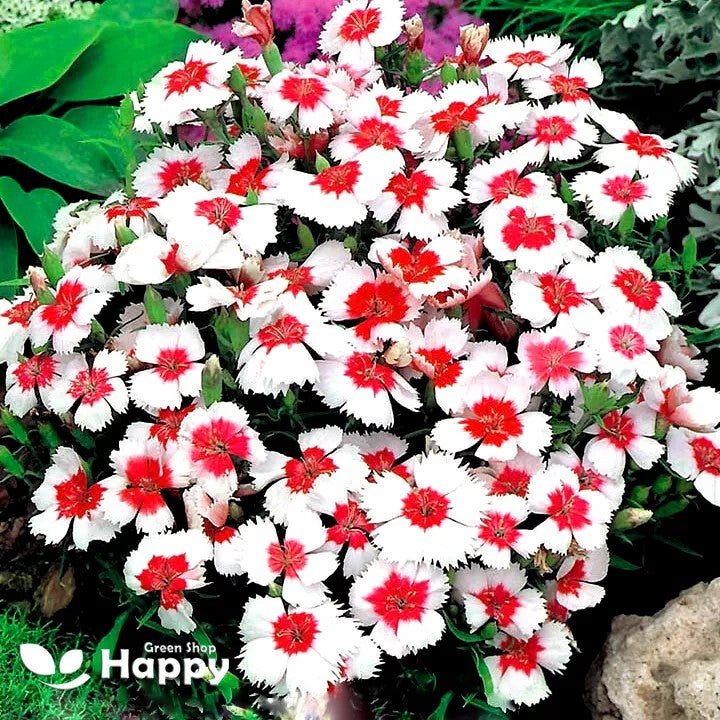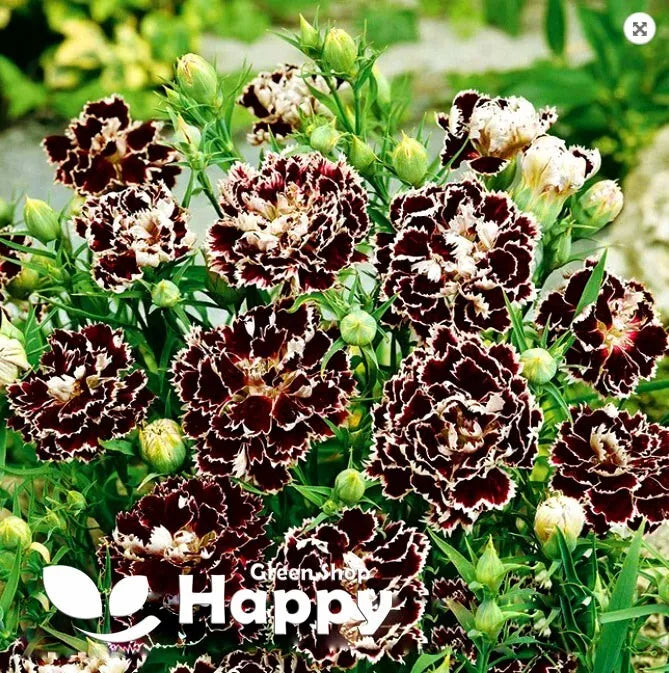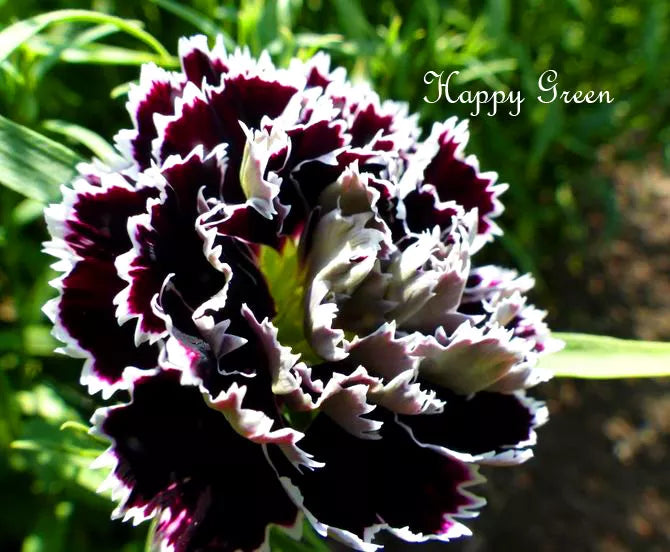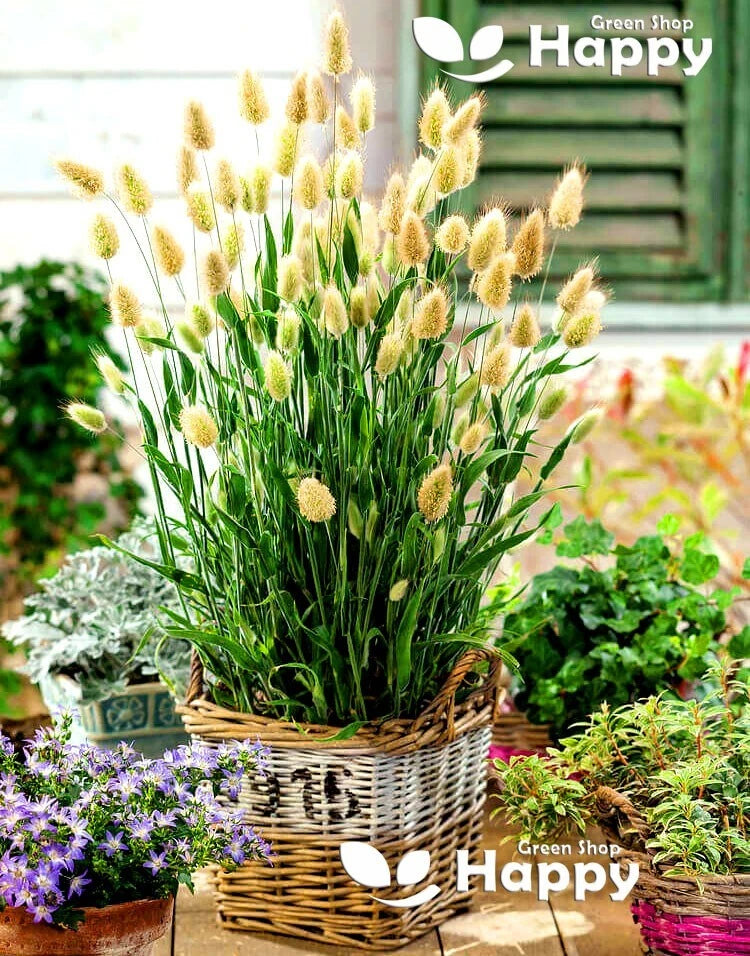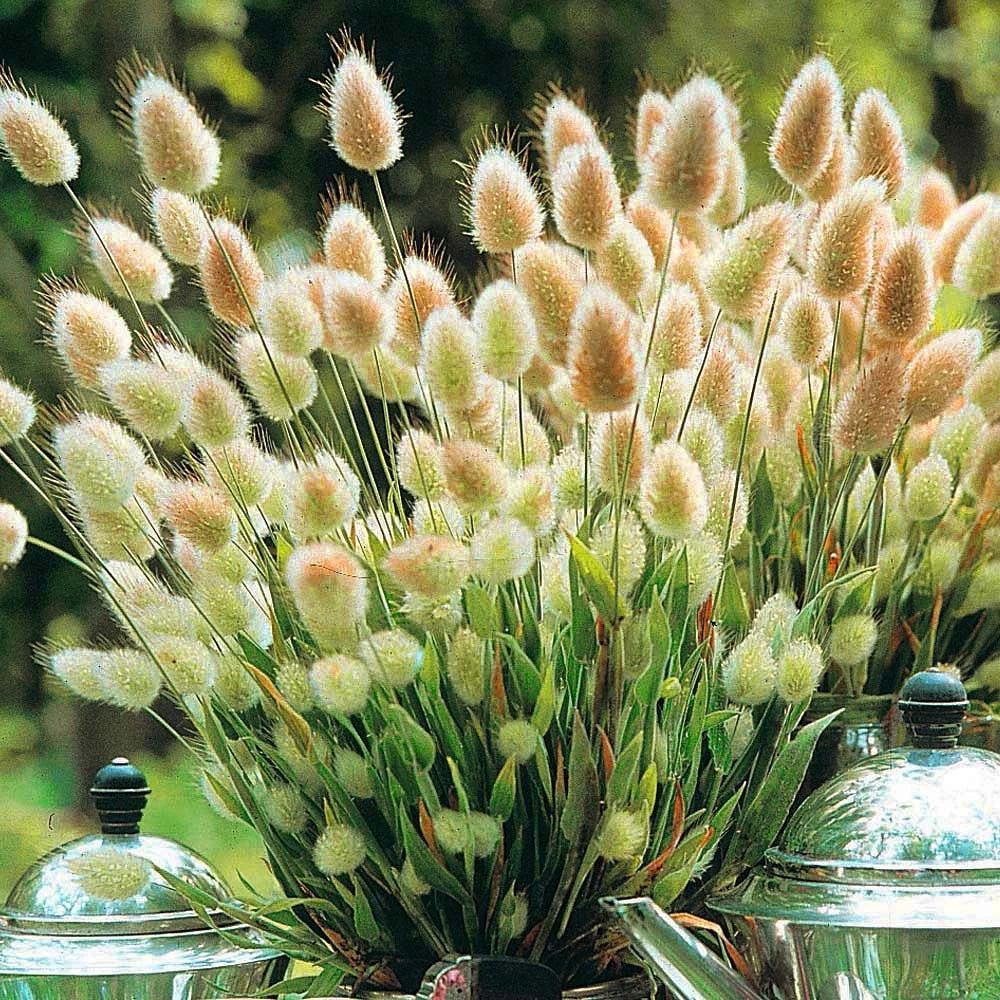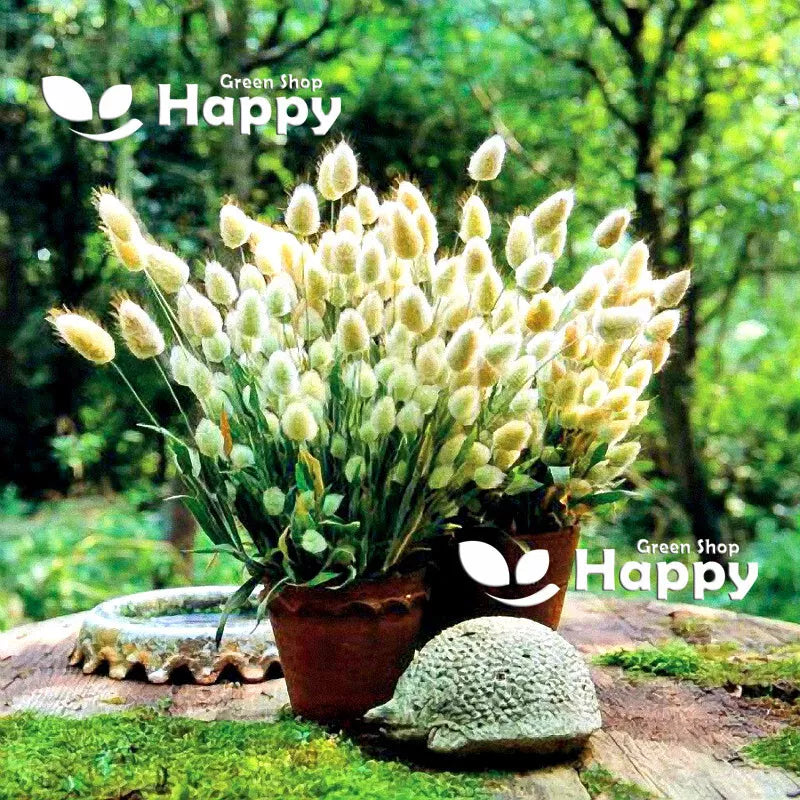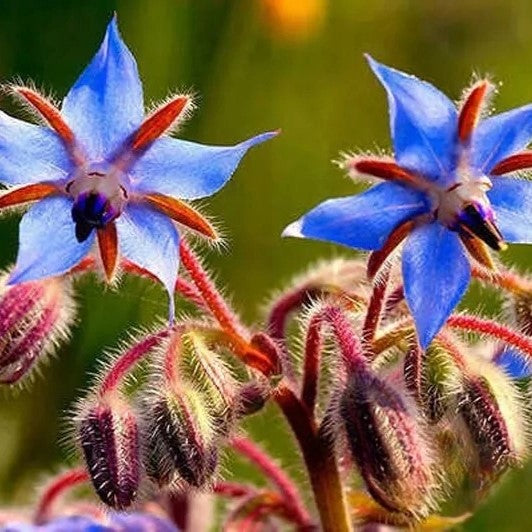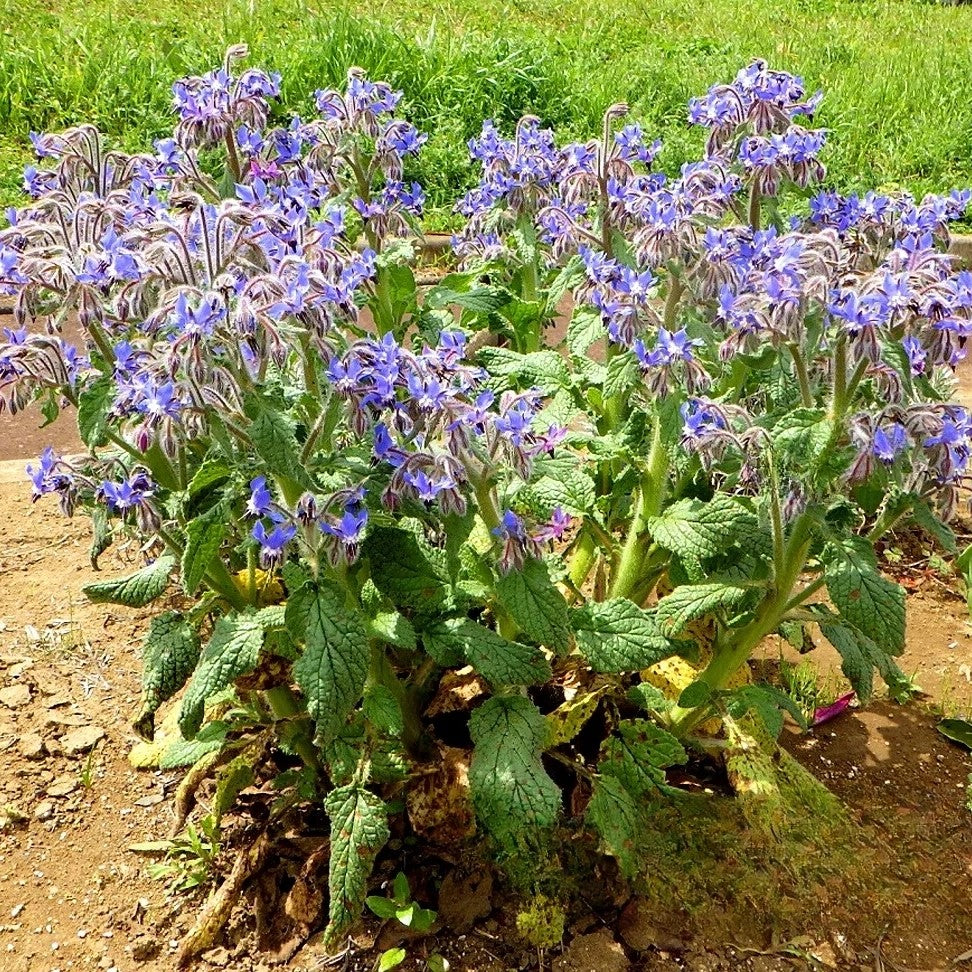Sort by:
180 products
180 products
Classic Zinnia – Seeds
(Zinnia linearis angustifolia) – Annual
The Classic Zinnia (Zinnia linearis angustifolia) is a compact and easy-to-grow annual, loved for its masses of daisy-like blooms in bright shades of yellow, orange, and white. Unlike tall zinnia varieties, this type has a bushy, spreading habit and flowers abundantly all summer long, making it perfect for edging, borders, and pots. It is drought-tolerant, long-flowering, and pollinator-friendly, ensuring a cheerful display with minimal effort.
Key Features
-
Type: Annual
-
Height: 20–40 cm
-
Spread: 25–35 cm
-
Blooming period: June–October
-
Position: Full sun
-
Soil: Well-drained, moderately fertile
Ideal For
-
Bedding and borders
-
Containers and pots
-
Pollinator-friendly gardens
-
Low-maintenance summer color
Sowing & Growing
-
Sow indoors: March–April (in trays or pots at 18–22°C)
-
Sow outdoors: May (after frost has passed)
-
Sowing depth: 0.5 cm, cover lightly with soil
-
Spacing: 25–30 cm apart
-
Care: Prefers sunny spots; deadhead to extend flowering season
CLARY SAGE "BLUE MONDAY" SEEDS (Salvia horminum)
Add striking color and fragrance to your garden with Clary Sage "Blue Monday". This annual produces tall spikes of vibrant blue flowers with aromatic foliage, creating a bold and beautiful display in borders, beds, and containers. Easy to grow and fast-flowering, it attracts pollinators while adding a touch of elegance to your garden.
Why Grow "Blue Monday"
-
Vibrant blue flower spikes with aromatic foliage
-
Fast-growing and easy to maintain
-
Attracts bees, butterflies, and other pollinators
-
Ideal for borders, beds, and containers
Key Features
-
Type: Annual (Salvia horminum)
-
Height: 45–60 cm
-
Flowering: Summer (June–September)
-
Position: Full sun
-
Uses: Borders, flower beds, containers, pollinator gardens
Ideal For
-
Adding bold color to garden borders and beds
-
Container and patio planting
-
Attracting pollinators like bees and butterflies
-
Beginner gardeners seeking easy-to-grow, striking flowers
Sowing & Growing
-
Sow indoors: 6–8 weeks before the last frost
-
Sow outdoors: After frost danger has passed
-
Germination: 10–14 days
-
Space seedlings: 25–30 cm apart
-
Full sun and well-drained soil ensures best flowering
Cinquefoil Potentilla 'Miss Willmott' Seeds (Potentilla nepalensis)
The Cinquefoil 'Miss Willmott' is a charming perennial with masses of rose-pink flowers marked with a darker red eye. Blooming freely from early summer into autumn, it adds a splash of color to borders, rock gardens, and cottage plantings. Hardy and easy to grow, this low-maintenance perennial thrives in sun or partial shade and is loved by pollinators.
What Makes It Special
-
Distinct rose-pink blooms with a striking red eye
-
Long flowering season from summer to autumn
-
Hardy, low-maintenance perennial perfect for borders
Key Features
-
Botanical name: Potentilla nepalensis 'Miss Willmott'
-
Hardy perennial
-
Height: 45–60 cm (18–24 in)
-
Bloom time: June to September
Ideal For
-
Cottage and perennial borders
-
Rock gardens and informal plantings
-
Wildlife-friendly gardens
Sowing
-
Sow indoors Feb–Apr or outdoors May–Jun
-
Lightly cover seeds; keep moist until germination
-
Germination: 14–28 days at 18–22°C
-
Transplant seedlings 30 cm apart
-
Flowers from the second year after sowing
Chinese Forget-Me-Not 'Mystic' Pink – Seeds (Cynoglossum amabile)
A soft and romantic twist on a classic cottage flower, Chinese Forget-Me-Not 'Mystic' Pink produces delicate clusters of pink blooms that bring charm to beds, borders, and cut flower arrangements. Long-flowering and easy to grow, it’s a pollinator-friendly addition that adds elegance to any garden.
Why Grow 'Mystic' Pink
-
Unique pink color rarely found in forget-me-nots
-
Attracts bees, butterflies & other pollinators
-
Ideal for cut flowers with a soft pastel tone
-
Low-maintenance, blooms over a long period
Key Features
-
Type: Hardy annual
-
Height: 40–50 cm
-
Flowering: June–September
-
Position: Full sun or partial shade
-
Uses: Borders, cottage gardens, wildflower plantings, cutting
Ideal For
-
Cottage gardens & wildflower meadows
-
Cut flower bouquets
-
Pollinator-friendly plantings
-
Soft color themes and romantic borders
Sowing & Growing
-
Sow outdoors: April–May, directly into prepared soil
-
Thin seedlings to 20 cm apart
-
Germination: 14–21 days
-
Water regularly until established
-
Flowers first year
China Pink 'Merry-go-round' – Seeds
(Dianthus chinensis)
China Pink 'Merry-go-round' is a charming annual featuring vibrant, frilled blooms in shades of pink with delicate markings. Its compact, bushy habit makes it perfect for borders, rockeries, and containers, providing continuous colour throughout the summer. Easy to grow and low-maintenance, this variety also attracts pollinators, adding life and beauty to any garden.
Key Features
-
Type: Hardy annual
-
Height: 20–30 cm
-
Spread: 20–25 cm
-
Flowering: June–September
-
Position: Full sun
-
Soil: Well-drained, fertile soil
Ideal For
-
Borders and edging
-
Rockeries and container planting
-
Pollinator-friendly gardens
-
Summer floral displays
Sowing & Growing
-
Sow indoors: February–April at 18–22°C
-
Sow outdoors: April–May directly in soil
-
Germination: 7–14 days
-
Thin seedlings or transplant to 20–25 cm spacing
-
Deadhead regularly to prolong flowering
Carnation Black – Seeds (Dianthus heddewigii ‘Chianti’)
Carnation ‘Black Chianti’ is a dramatic annual with deep, velvety maroon to near-black blooms that make a bold statement in beds, borders, and cut arrangements. Its compact habit, long flowering season, and striking color bring elegance and contrast to any garden. Easy to grow and perfect for adding depth to mixed displays.
Why Grow "Black Chianti"
-
Striking near-black, velvety blooms
-
Compact and easy to grow
-
Long flowering season
-
Great for cutting and arrangements
Key Features
-
Type: Hardy annual (Dianthus heddewigii)
-
Height: 30–45 cm
-
Flowering: June–September
-
Position: Full sun, well-drained soil
-
Uses: Borders, containers, cut flowers
Ideal For
-
Bold bedding schemes
-
Patio containers
-
Cottage and modern gardens
-
Dark accents in floral displays
Sowing & Growing
-
Sow indoors: February–April in trays/pots
-
Sow outdoors: April–June in prepared soil
-
Germination: 7–14 days at 18–22°C
-
Transplant or thin to 20–25 cm apart
-
Remove spent blooms to extend flowering
Butterfly Wildflower Mix – 1g Seeds
Bring your garden to life with the Butterfly Wildflower Mix, specially selected to attract butterflies and other pollinators. This colorful blend combines hardy annuals and perennials that provide nectar-rich flowers from early summer through autumn. Easy to sow and low-maintenance, it creates a vibrant, wildlife-friendly display that supports biodiversity.
Why Grow Butterfly Wildflower Mix?
-
Specially formulated to attract butterflies
-
Long season of nectar-rich blooms
-
Easy to sow directly outdoors
-
Supports pollinators and biodiversity
Key Features
-
Type: Annuals and perennials mix
-
Height: 30–90 cm
-
Flowering: June–October
-
Position: Full sun
-
Coverage: 1 g covers approx. 1–2 m²
Ideal For
-
Wildlife and pollinator gardens
-
Naturalized areas and meadows
-
Cottage gardens and borders
-
Low-maintenance landscapes
Sowing & Growing
-
Sow outdoors: March–June or September
-
Rake soil to a fine tilth, scatter seeds evenly, cover lightly
-
Water gently until established
-
Thin seedlings where necessary
-
Allow some plants to self-seed for following years
Tip: For best results, sow in a sunny spot with poor to moderately fertile soil.
Bunny’s Tail Grass Seeds (Lagurus ovatus)
Bunny’s Tail Grass is a delightful ornamental grass grown for its soft, fluffy seed heads that resemble little rabbit tails. Compact and charming, this annual grass produces tufted, silky panicles that turn from pale green to creamy white as they mature. It is excellent for borders, containers, wildlife gardens, and makes a superb addition to dried flower arrangements. Easy to grow and highly versatile, it adds both movement and texture to summer displays.
What Makes It Special
-
Unique fluffy “bunny tail” seed heads
-
Excellent for fresh or dried flower arrangements
-
Compact and suitable for pots or borders
-
Loved for adding texture to floral displays and garden edges
Key Features
-
Botanical name: Lagurus ovatus
-
Common name: Bunny’s Tail Grass / Hare’s-tail Grass
-
Seed count: Approx. seeds per pack
-
Height/Spread: 30–45 cm tall, 20–30 cm spread
-
Position: Full sun; well-drained soil
-
Flowering period: June–September
Ideal For
-
Borders and edging
-
Patio containers
-
Dried flower arrangements
-
Wildlife-friendly gardens
-
Coastal and low-maintenance planting
Sowing Instructions
-
When to sow: March–May indoors or direct sow outdoors in April–June
-
How to sow:
-
Sow thinly on the surface of well-drained seed compost or prepared soil
-
Lightly cover with fine soil or vermiculite
-
Keep moist until germination (10–20 days)
-
-
Transplant/Thin: Space plants 20–25 cm apart
-
Care: Minimal care needed; drought-tolerant once established. Cut seed heads for drying when fluffy.
Borage – Seeds
(Borago officinalis) – Edible Flowers & Pollinator Magnet
Borage, also known as the starflower, is a fast-growing annual herb admired for its vivid blue, star-shaped flowers and fuzzy, cucumber-flavored leaves. A favorite of bees, butterflies, and other pollinators, it makes an excellent addition to herb gardens, vegetable patches, or pollinator-friendly borders. Both flowers and young leaves are edible – perfect for garnishing salads, desserts, drinks, or freezing into ice cubes.
Key Features
-
Plant type: Annual herb
-
Height: 50–70 cm
-
Spread: 30–40 cm
-
Flowers: Bright blue, star-shaped
-
Foliage: Grey-green, hairy leaves with cucumber flavor
-
Position: Full sun to light shade
-
Soil: Moderately fertile, well-drained
Ideal For
-
Herb & cottage gardens
-
Attracting pollinators (especially bees)
-
Edible flowers & herbal teas
-
Companion planting with tomatoes, strawberries, and courgettes
Sowing & Growing
-
Sow outdoors: April–June, direct in soil, 1 cm deep.
-
Germination: 7–14 days.
-
Spacing: Thin to 30 cm apart.
-
Flowering: June–September.
Care Tips
-
Easy to grow and self-seeding – will naturalize readily.
-
Pinch back growing tips for bushier plants.
-
Collect flowers regularly to encourage continuous blooming.
-
Water in dry spells but avoid overwatering.
Showing 162/180




